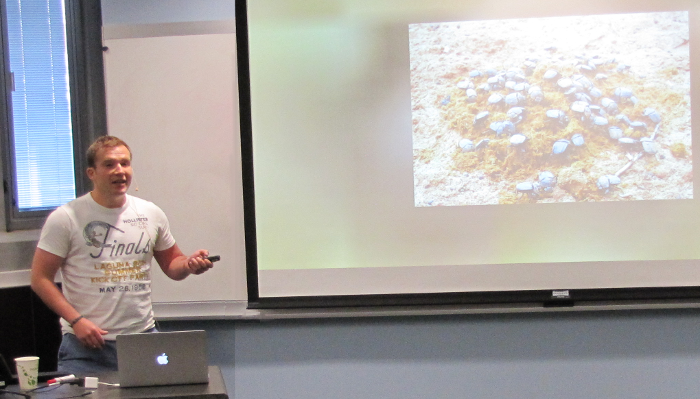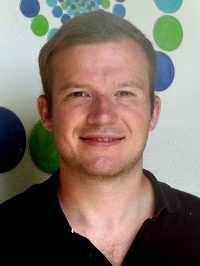NIMBioS Seminar Series
In conjunction with the interdisciplinary activities of the National Institute for Mathematical and Biological Synthesis (NIMBioS), a seminar series on topics in mathematical biology will be hosted at NIMBioS every other Tuesday at 3:30 p.m. (unless otherwise noted) in the Hallam Auditorium, Room 206, Claxton Building, 1122 Volunteer Blvd. Seminar speakers will focus on their research initiatives at the interface of mathematics and many areas of the life sciences. Light refreshments will be served in Room 205 beginning 30 minutes before each talk. Faculty and students from across the UT community are welcome to join us.
Speaker:
Dr. Sergei Tarasov, NIMBioS postdoctoral fellow
Time/Date: Tuesday, August 23, 2016, 3:30–5:00 p.m.*
Location:
Room 206, Claxton Building, 1122 Volunteer Blvd.
Topic:
Systematics of dung beetles (Coleoptera: Scarabaeidae: Scarabaeinae) and ontology-informed models for phenotypic evolution
Abstract: The first and main part of my talk will be focused on the systematics and phylogenetics of dung beetles. Dung beetles are a globally distributed group of insects that comprises ˜6200 species feeding mainly on mammalian excrements. Additionally, dung beetles are popular model organisms in ecology and evo-devo; for the last two decades they have experienced a systematics renaissance with the adoption of modern phylogenetic approaches. Numerous studies produced contradictory trees leading to the lack of consensus on their evolutionary history. In my research, I revisit the phylogenetics and attempt to revise the classification of dung beetles through the acquisition of global morphological and molecular datasets. To improve phylogenetic inference, I employ novel approaches that use Bayesian posterior prediction for selecting data partitions in molecular analysis and partitioning of morphological matrices using anatomy ontologies. Both the molecular and morphological datasets yield generally consistent results, which provide new insight into relationships and suggest a new classification for dung beetles.
The second part of my talk will be devoted to my ongoing postdoctoral project focused on modeling phenotypic evolution. The dependencies among body parts in organisms evolve during the course of evolution, yet the current comparative phylogenetic methods generally operating with a single character ignore them. These anatomical dependencies can be represented as a tree graph, which is allowed to evolve over phylogenetic tree as a single complex unit. The application of such framework enables mapping evolution of the entire phenotype and addressing questions on the evolutionary novelties and adaptive dynamics of morphology. Since this project is in initial stage, I will mainly explore underlying concepts and its potential application.
*Join us for refreshments at 3 p.m.
Seminar Flyer (pdf)
![]()
This seminar was streamed live and is now available for viewing on NIMBioS' YouTube channel.
Watch seminar online.
For more information about this and other NIMBioS Seminars, visit /seminars.

NIMBioS
1122 Volunteer Blvd., Suite 106
University of Tennessee
Knoxville,
TN 37996-3410
PH: (865) 974-9334
FAX: (865) 974-9461
Contact NIMBioS



